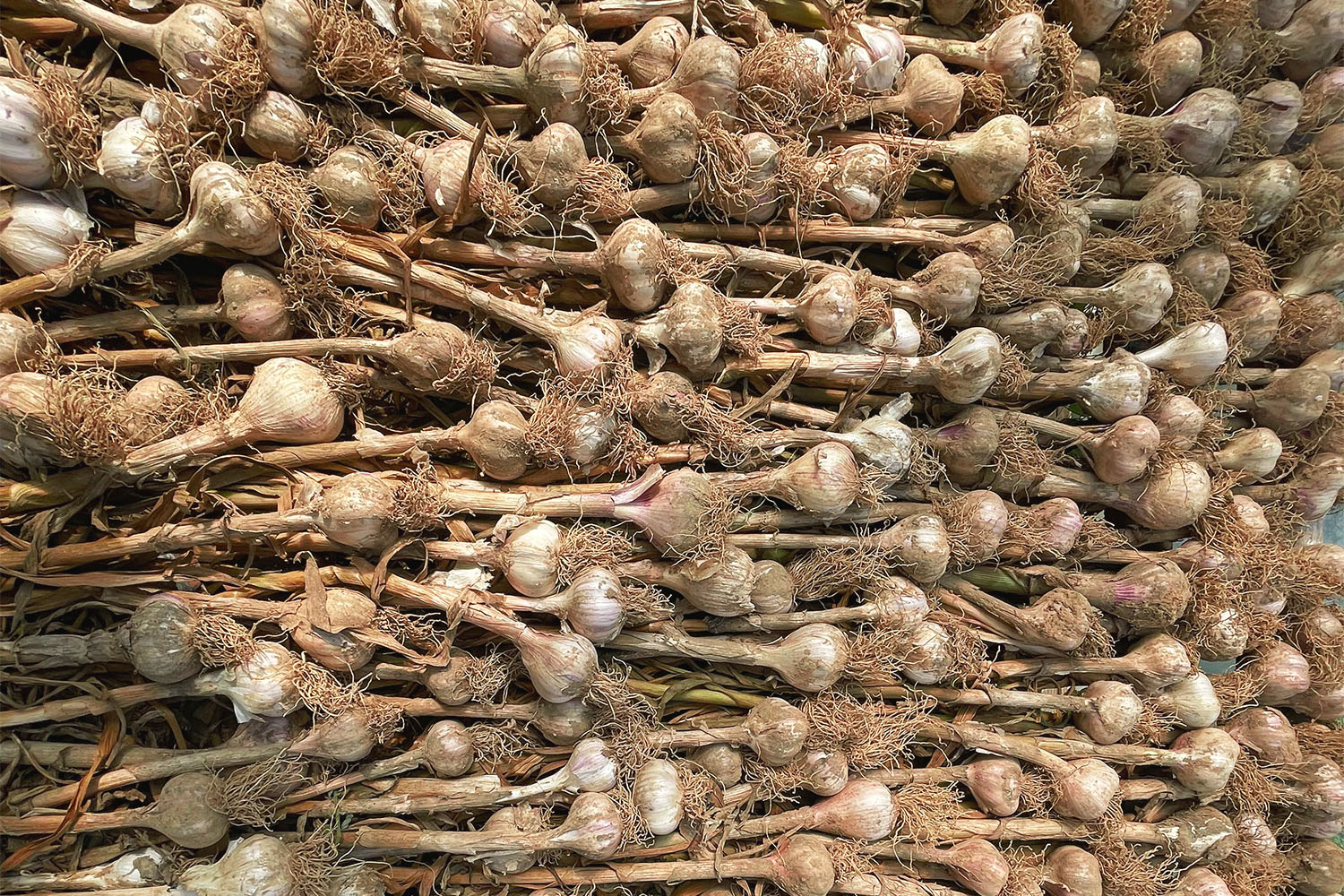Get Your Garden Ready for Fall and Winter (and Spring)!
Prep your plants!
In this article, I’m welcoming back the Green Thumb Gang: Gardeners (and adorable couple) Andie Fortier and James Burke are here to give you tips on how to ready your garden for the coming winter — and to get a head start on spring. Enjoy! – NPH
Hi there, it’s Andie Fortier and James Burke again! We own a small two-acre organic farm, Sand and Soil Farm, in Amagansett, NY, where we grow mixed vegetables and flowers to sell at local farmers’ markets in our area. We’re also the caretakers for the Nick and Toni’s restaurant garden, as well as various other gardens in the Eastern Long Island area. Including Neil and David’s.
With fall in full swing, there is still plenty to do on the farm. And in your garden! Neil asked us to pass along our top tricks to make sure you’re making the most of the current season, while at the same time preparing for the warm seasons to follow.
FALL BACK
While autumn is a time to ready your garden for the coming cold of winter, don’t think of it as the beginning of a hibernation period. While rest and replenishment of your soil is key this time of year, there are plenty of crops and plants that will yield cold-weather harvests. And others that you’ll want to plant now to enjoy as late as next summer. Here are some of our best tips for this time of year.
- When removing dead plants from the previous season, cut at the root rather than pull out to ensure you are not losing any precious soil. The roots, if left in, will decompose on their own.
- In larger gardens, cover cropping can be helpful — that’s when you plant crops that will protect your soil instead of growing them to be harvested. Try lightly spreading a mix of winter pea seeds and/or rye seeds in the late fall to till and incorporate into your garden. It’ll help maintain and improve your soil quality heading into spring.
- Take notes as to where each crop was planted before removing, to ensure you are rotating where each is planted from year to year. A crop rotation helps prevent the spread of disease between plant families and ensures soil health.
- If you are an indoor/apartment gardener, herbs can be grown in pots in a sunny window year round. Don’t have a sunny window? (We’ve been there! We lived in a tiny, dark NYC apartment a few years back.) A grow light will keep indoor plants happy all winter long.

START ON SPRING
There are many things you can plant to get a jump-start ahead of spring: brassicas, for example — kale, broccoli, cauliflower and Brussels sprouts — can be planted now for harvest in mid-winter/early spring. And now’s the time to plant two of our absolute favorite spring/summer crops — garlic and tulips — as they require a period of cold called vernalization.
First, garlic. Now, as with anything in the garden or on the farm, planting dates are highly specific to the agricultural zone in which you live — consult your local farmers or planting date calendar to figure out the nuances of your area’s zone, soil, etc. Here on Long Island, we plant our garlic at the end of October. But a great advantage to growing your own garlic is that varieties are regionally specific, and can be successfully grown no matter where you are. (If this is your first year growing garlic, stop by your local farmers’ market or agricultural center to learn more, and see if you can purchase some of theirs to plant in your garden.) When planting, use an individual clove (unpeeled!) with the rooted part down in contact with the soil. Generally, you should plant roughly the depth of the clove itself. Allow space between plants, 6 to 8 inches, and cover well with soil. Compost and organic fertilizer is advised. Then…wait! It could take until July to harvest, but those many cold months will help ensure that your garlic heads will produce more, and more flavorful, cloves.
Or, if you prefer flowers and still want the satisfaction of harvesting something before summertime, try planting tulip bulbs. A wide variety of bulbs can be purchased at your local nursery. Select those you like best, pick a fully sunny to partially-shaded area, and start digging! Tulips should be planted a bit deeper than your garlic — about 6 inches down, in order to ensure better frost protection and plant longevity — and spaced about 5 inches apart. Just like the garlic, tulips need a period of cold to ensure their best blooms, so if you don’t have cold winters in your area, you may need to refrigerate your bulbs prior to planting. While all varieties differ slightly, planting your tulips in the fall will give you an amazing pop of color in spring.




